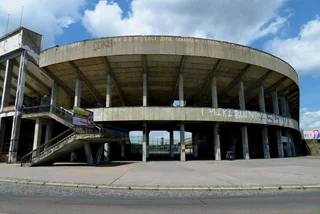Student protester Jan Palach died Jan. 19, 1969, three days after he set himself on fire on Prague’s Wenceslas Square to protest against the government's complacency following the August 1968 Soviet-led Warsaw Pact invasion of Czechoslovakia.
Sine then, he has become a national hero but memorial events for the 52nd anniversary have been low key due to restrictions on public gatherings.
Senate President Miloš Vystrčil and three other senators on Jan.16 laid flowers at both a memorial cross in front of the National Museum on Wenceslas Square and at a new memorial called Flame in front of the New Building of the National Museum.
“I just wonder what it must have looked like at a time when young people were so desperate that they even set themselves on fire to warn others that something was wrong. It is a memento that I carry within me, and I am grateful that we can live in a time that is significantly different today than it was then,” Vystrčil said.
Other politicians made their statements on social media. Prime Minister Andrej Babiš called for national unity as the country faces a new crisis.
“Today, I also think of the memory of Jan Palach, who 52 years ago sacrificed his life in the hope that his deed will help bring the nation together. Our country then faced an occupation, today we have to face an insidious pandemic. That is why I would very much like us to reunite and defeat her together,” he said on Facebook.
Czech Foreign Minister Tomáš Petříček linked Palach to the Velvet Revolution, which took place 21 years after his death.
#JanPalach, #JanZajíc and #RyszardSiwiec sacrificed their lives in protest against the Soviet occupation of #Czechoslovakia 🇨🇿. In 1989, during “#PalachWeek”, people first made it clear that the time had come for the end of communism in our country. pic.twitter.com/kr0LhQRczg
— Tomáš Petříček (@TPetricek) January 16, 2021
“Jan Palach, Jan Zajíc, and Ryszard Siwiec sacrificed their lives in protest against the Soviet occupation of Czechoslovakia. In 1989, during ‘Palach Week,’ people first made it clear that the time had come for the end of communism in our country,” he said.
Siwiec died from self-immolation in Warsaw, Poland, on Sept. 12, 1958, though it was not widely publicized at the time. Zajíc followed on Feb. 25, 1969, in front of a building on Wenceslas Square.
Pamatujme, pokud přestaneme připomínat předchozí protiprávní přečiny, přetrvává prostor pro příchod podobné pohromy. #Palach 🙏♥️
— Tomáš Zdechovský (@TomasZdechovsky) January 16, 2021
Zdroj FB: Pohádky písmene Pé pic.twitter.com/jqEnZRpehs
Tomáš Zdechovský, a member of European Parliament and deputy leader of the Christian Democrats, warned people to be ever vigilant.
“Let us remember that if we stop recalling previous offenses, there is still room for a similar disasters to occur,” he said on Twitter.
Prague City Hall posted a simple reminder of the event and a picture of a newspaper clipping from the time. “52 years ago, student Jan Palach set himself on fire in Valclav Square. This happened in protest against the suppression of freedoms and the passive attitude of the public after the beginning of the occupation,” Praha.EU posted on Facebook.
A new memorial to Palach was unveiled Nov. 17, 2020, in front of the New Building of the National Museum, which was previously the Federal Parliament and after the Velvet Revolution for a while was home to Radio Free Europe.
The bronze sculpture called Flame (Plamen) was installed on the 30-meter metal pylon outside the building. The pylon has been there since the 1970s.

The pylon, designed by architect Karel Prager as part of the 1968–73 remodeling of the Federal Assembly, was meant to resemble a flame in the sky. It was supposed to carry a granite sculpture by Miloslav Chlupáč called Flame. That sculpture was never erected due an intervention by the Communist party,
In 2018, on what would have been Palach’s 70th birthday, the management of the National Museum decided to complete the original plan, but with a bronze sculpture instead of a granite one.

It is one of six monuments to Palach in Prague. Three are near where he set himself on fire. In addition to the Flame sculpture, there is the bronze cross in the sidewalk front of the Historical Building of the National Museum and a plaque on Wenceslas Square in the greenery near the statue of St. Wenceslas.
On the building of the Philosophy Faculty of Charles University, at náměstí Jana Palacha (Jan Palach Square), there is a bronze plaque is by sculptor Olbram Zoubek with a copy of Palach’s death mask.

Next to náměstí Jana Palacha at on Alšovo nábřeží is the House of the Son and the House of the Mother, installed in 2016. The two sculptures by late American architect John Hejduk are meant to resemble buildings on fire.
A street-art style mural of Palach and priest Josef Toufar, erected in 2014, is on the side of the dilapidated Borůvkovo sanatorium on Legerova Street. Both Palach and Toufar, a victim of a communist show trial, died at the hospital that was once located there.
In October 2019, the National Museum opened the Jan Palach Memorial in his family home in Všetaty, Central Bohemia, including a new modern building with an interactive exposition.












 Reading time: 4 minutes
Reading time: 4 minutes 



























